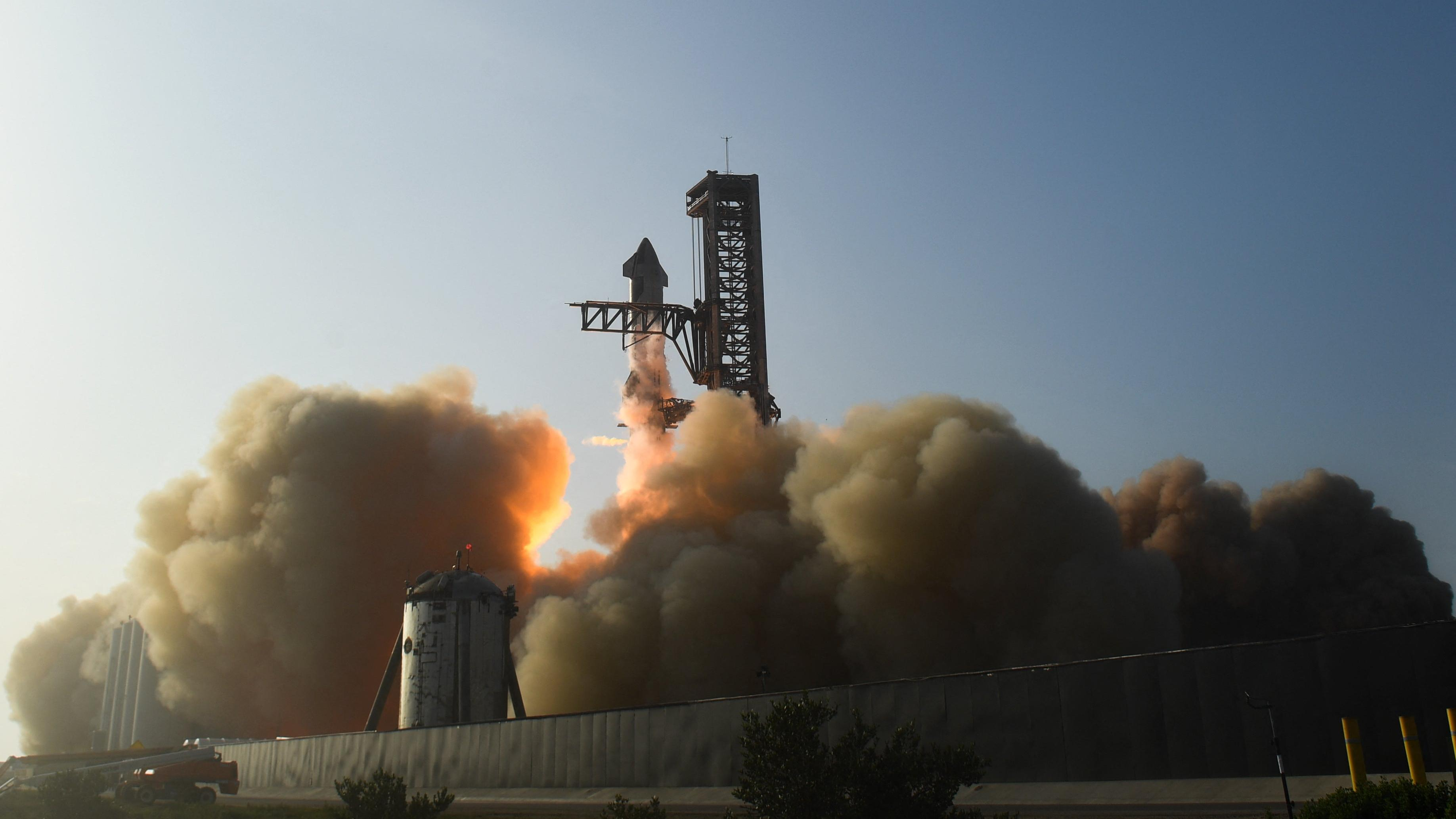Next Starship Launch Will Try To Fix All Of That
“Obviously not a complete success, but still nonetheless successful,” Elon Musk said.
When it comes to something as complex as literal rocket science, it doesn't take much for things to go totally awry. The SpaceX Starship launch last month was cut short when the most powerful rocket ever built spiraled out of control and didn't respond right away to a self-destruct command.
Elon Musk updated SpaceX enthusiasts during a Twitter Spaces chat last week. He said he wasn't really expecting this launch to make it into space and just getting off the launch pad was a big win for the rocket. Musk told Twitter users the trouble started when three of Starship's 33 engines failed to fire, according to The New York Times:
"The system didn't think they were healthy enough to bring them to full thrust," Mr. Musk said, "so they were shut down."
The loss of the three engines caused Starship to lean to the side as it headed upward. "We do not normally expect a lean," Mr. Musk said. "It should be actually going straight up."
Twenty-seven seconds after launch, something went wrong with one of the engines — "some kind of energetic event," Mr. Musk said — and that damaged several other nearby engines.
"The rocket kept going, though," Mr. Musk said. It was 85 seconds into the flight "where things really hit the fan," Mr. Musk said, when the rocket lost its ability to steer its direction by pointing the engine nozzles.
From that point, the rocket started flying out of control and continued even after the termination command.
"It took way too long to rupture the tanks," Mr. Musk said of the flight termination system, which is intended to destroy an out-of-control rocket. The delay did demonstrate the resilience of the rocket, which stayed intact as it tumbled.
The 30 working engines on Starship blasted apart the cement launch pad apart, creating a "rock tornado" according to Musk. It was "...basically a human-made dust storm," Musk said, which scattered debris for hundreds of acres. Musk said on Twitter a giant, water-cooled metal plate is planned to replace the concrete and has been in the works for a while, but it wasn't ready for the April 20 launch.
3 months ago, we started building a massive water-cooled, steel plate to go under the launch mount.
Wasn't ready in time & we wrongly thought, based on static fire data, that Fondag would make it through 1 launch.
Looks like we can be ready to launch again in 1 to 2 months.
— Elon Musk (@elonmusk) April 21, 2023
It begs the question why he risked launching a rocket without a critical piece of safety infrastructure. U.S. Fish and Wildlife Service is now investigating the pad issue, inspecting wildlife areas around the launch site and in the wake of Starship's debris field. Folks living near Boca Chica, Texas, where SpaceX is located, were also affected by the pad's disintegration, according to Aerospace America:
At least as concerning to regulators as the explosion over the gulf might be what happened when Super Heavy's 33 Raptor engines ignited atop the cement pad. Video taken by the independent LabPadre channel showed debris being strewn far from SpaceX's Starbase facility which is surrounded by the South Padre Island tourist area, the small city of Port Isabel and Laguna Madre, a vast shallow bay known for its bird and fish life.
Another group that monitors Starship activity, RGV Aerial Photography, posted photos on social media showing damage to the pad. Port Isabel, the city of 5,000 located 10 kilometers from the launch site, reported on Facebook that "sand and dust" covered homes and cars.
The Federal Aviation Administration grounded Starship following the explosion, which is standard federal procedure after such an event. Starship is critical to NASA's plans to return to the Moon and explore Mars. While Musk struck a hopeful chord that Starship would be ready to blast off well before either mission, regulators are taking a long, hard look at SpaceX's operations after the explosion.
